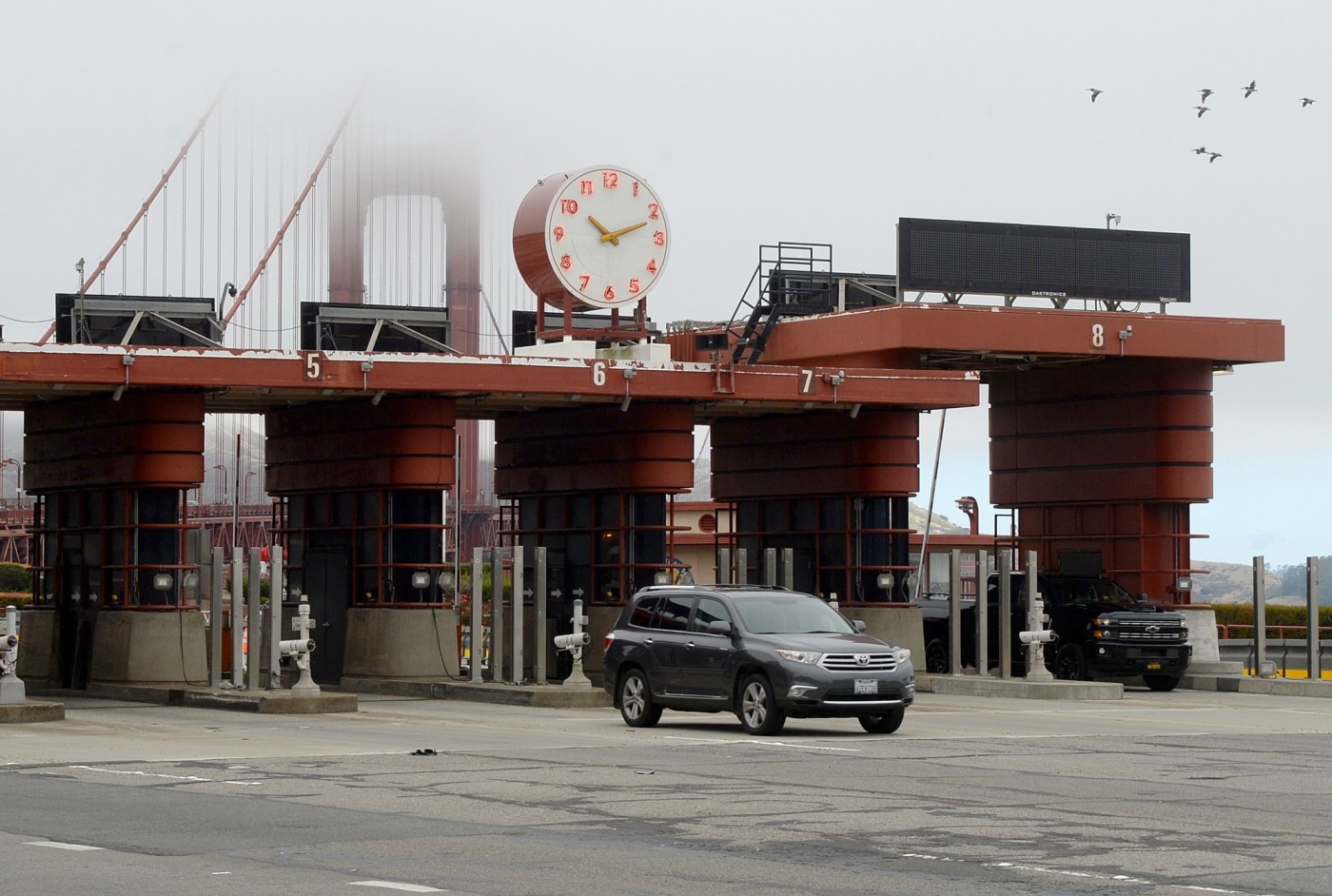Golden Gate Bridge officials will consider four options for another five-year round of toll increases that would break the $10 mark for all drivers as the agency faces financial struggles.
Last week, the board governing the Golden Gate Bridge, Highway and Transportation District authorized staff to hold two online “open houses” before taking the proposal to a vote at a public hearing.
District officials say they are facing a $220 million budget shortfall over the next five years if tolls are not increased.
“At the open houses, the public will learn about the financial needs and will be asked to comment on the four toll increase options,” Jennifer Mennucci, the district’s budget director, said Thursday at a meeting of the finance committee.
“Staff looked at a variety of toll options, and the ones proposed produce approximately half — a little more, a little less — of the projected $220 million five-year shortfall,” Mennucci said.
The online forums are scheduled for noon Feb. 14 and 7 p.m. Feb. 15. The public hearing is scheduled for 9 a.m. Feb. 22 in the board room at the Golden Gate Bridge administration building in San Francisco. The board approved the schedule at its meeting on Friday.
For the fiscal year that ended June 30, toll revenue — about half of which funds transit activity — was about $146 million. That revenue is expected to remain flat over the next year, even with the 35-cent increase that took effect in July. That’s because violation policies have changed, and the district is projecting less revenue from infractions, staff said.
The toll for two-axle vehicles is $9.75. The tolls for drivers with FasTrak, who make up the majority of bridge users, is $8.75. For drivers who have a “pay as you go” account, which includes drivers who register their license plates or set up a one-time payment through the district, the toll is $9.
The rates represent the final increase in the five-year toll hike plan that started in 2019.
Looking ahead, each of the new proposals envisions a five-year plan beginning on July 1. The first option would set a 50-cent annual increase, raising about $139 million over five years. The second option is a 40-cent annual bump that would collect about $114 million over the same time period.
Option three involves a 4% annual increase, raising about $107 million. This option would add 35 cents annually in the first two years, then 40 cents per year in the remaining three years.
Option four is another 35-cent annual increase that would generate about $101 million over five years.
A car passes through the toll plaza at the Golden Gate Bridge in San Francisco, Calif., on Monday, June 27, 2022. (Alan Dep/Marin Independent Journal)
The effects of the pandemic are lingering, staff said. Although the district received $278 million in pandemic relief, those funds will be exhausted by the end of the fiscal year. The 10-year forecast shows a $679 million deficit if tolls aren’t increased, staff said.
Related Articles
Golden Gate Bridge says suicide nets now in place
This view of the Golden Gate Bridge is getting an upgrade — but for many, it’s an unwelcome one
Golden Gate Bridge toll increases likely again amid deficits
Photos: Golden Gate Bridge suicide-deterring net nears completion
The district says it has about 80% to 85% of its pre-COVID traffic, with commute hours down about 30%. That translates to about a $25 million to $30 million drop in annual revenue.
Bridge tolls are the district’s largest source of revenue, making up about 46% of its revenue forecast for the upcoming fiscal year.
“As a businessman, there’s two parts to any equation when your righting a ship: One is cutting expenses, and the other is growing your revenue,” said Gerard Giudice, a district board member.
“And my heart tells me of course that we will need to do this in a way that is easiest on those who cannot afford toll increases, etc.,” said Giudice, a member of the Rohnert Park City Council. “Looking at some of these options, I think that some of them, like option one, can definitely start to right the ship.”
Board member Barbara Pahre of Napa County said she was “shaken” that the proposals can only cover about half of the $220 million shortfall.
“When we look at it as income, that’s a lot of money,” she said. “When we look at it as shortfall, it’s more.”
Board members said they wanted to make sure public outreach materials are multilingual. Staff said that is part of the plan, and a Spanish translator will be available for the open house sessions.
“I think that if there could be one positive out of the pandemic it’s the ability to reach people virtually and have that interaction, so that’s a good thing,” said David Rabbitt, a board member who is chair of the finance committee and a Sonoma County supervisor.
More information on the meetings will be posted to goldengate.org.











+ There are no comments
Add yours